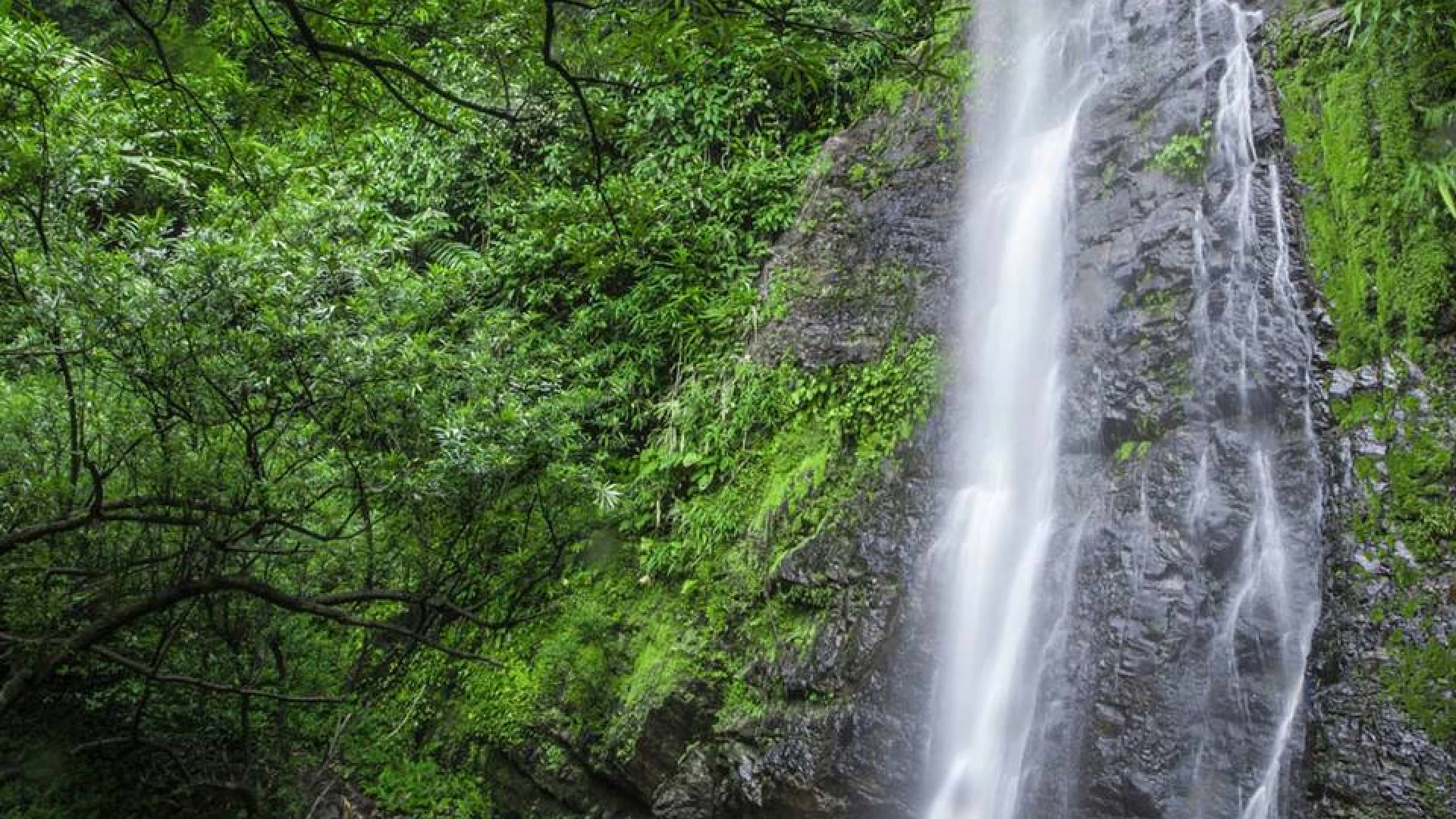Vang Vieng
Vang Vieng is nestled halfway between Vientiane, the capital of Laos, and Luang Prabang, a UNESCO World Heritage Site. Once a quiet riverside village, it has transformed into a vibrant hub known for river tubing, with a lively strip of bars, restaurants, and social spots that rival Bangkok’s Khao San Road.
What continues to draw travelers, however, is Vang Vieng’s breathtaking natural scenery—towering limestone karst mountains and a winding river that meanders through lush landscapes. Since Laos opened its doors to tourism in the 1990s, this stunning backdrop has captivated adventurers and nature lovers alike.
While it may not offer the serenity some seek en route to Luang Prabang, Vang Vieng rewards those in search of outdoor thrills. From rock climbing to ATV rides, there’s no shortage of adventure before winding down at a riverside bar to soak in the view. For a few days of fun, activity, and unforgettable scenery, Vang Vieng is hard to beat.
Travel Guide
1. Transportation
1.1 How to Get to Vang Vieng
Vang Vieng sits conveniently between Vientiane and Luang Prabang, making it easily accessible from either direction. Buses from both cities arrive at the Vang Vieng bus terminal on Route 13, located about 2 kilometers north of the town center.
If you’re traveling independently by regular bus, be prepared: finding a tuk tuk from the terminal to town for less than 20,000 kip can be challenging—even though the ride should cost closer to 10,000 kip.
Minivans offer a faster alternative to regular buses, shaving off an hour or two of travel time (depending, perhaps, on how much M-150 energy drink the driver has had). Just note that the ride can be quite cramped inside. From Vang Vieng, a vehicle—whether a songthaew or VIP bus—departs for Vientiane roughly every hour.
If you have some flexibility in your budget, hiring a private car or van is the most convenient and comfortable way to travel. You’ll enjoy a smoother ride, more legroom, and full control over your itinerary, including scenic stops for photos. This is an especially great option if you’re prone to motion sickness or want to capture some rare, stunning views of rural Laos along the way.
1.2 Getting Around Vang Vieng
The town of Vang Vieng is small enough to explore on foot, but if you want to venture out to the rice fields, blue lagoons, and nearby waterfalls, you’ll need to rent a bicycle or scooter. For something more adventurous, UTVs (similar to desert buggies) are also available for rent.
Tuk tuks are plentiful and can be hired for local transport or half-day tours. Just be sure to agree on a price before getting in. For reference, we paid 250,000 kip for a 6-hour tuk tuk rental, arranged through our hotel.
2. Best Times to Visit
The ideal time to visit Vang Vieng is during the dry season, which runs from late October to mid-April. Temperatures typically range between 20°C and 27°C—perfect for outdoor adventures like hiking, kayaking, and sightseeing.
Mid-April through May marks the hottest part of the year, with daytime temperatures soaring to 35–40°C. If you’re not a fan of intense heat, it’s best to avoid this period.
The rainy season (from late May to mid-October) brings frequent showers and the occasional heavy storm. While the landscapes become lush and vibrant, some outdoor activities may be postponed or canceled due to weather. Flexibility in your plans is essential if you’re visiting during these months.
Places Of Interest
Blue Lagoon 1
Just outside Vang Vieng, tucked into a lush green forest, lies the ever-popular Blue Lagoon 1—a vibrant turquoise lake where travelers have long come to cool off and cut loose. There are plenty of ways to make a splash: leap from the shore, launch off tree platforms, slide into the water, or swing out on a rope like Tarzan.
And after that adrenaline rush? Take it slow. Stretch out in the sun alongside fellow adventurers, float lazily in the cool waters, or, if you’re craving more excitement, soar through the treetops on a zip line. Whether you’re here to chill or chase thrills, Blue Lagoon 1 delivers.
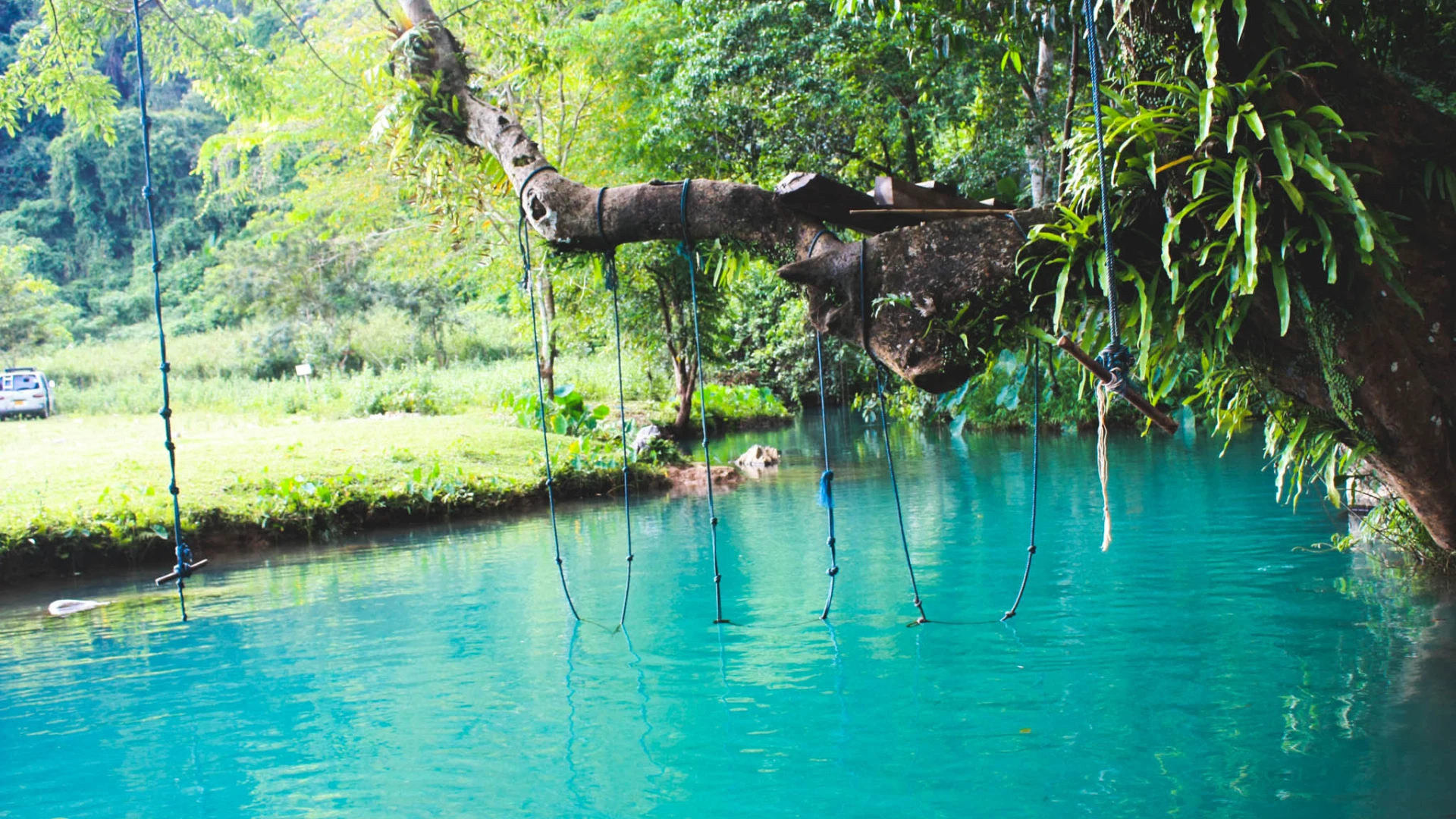
Blue Lagoons 2 & 3
For those seeking a more laid-back alternative to the ever-popular Blue Lagoon 1, Blue Lagoons 2 and 3 offer just that. Located further from town—accessible via a longer, bumpier tuk-tuk ride—they tend to be quieter and less crowded.
But don’t mistake tranquility for boredom. Both lagoons feature a range of fun ways to make a splash, including zip lines, waterslides, and rope swings. It’s the perfect blend of relaxation and adventure, minus the crowds.
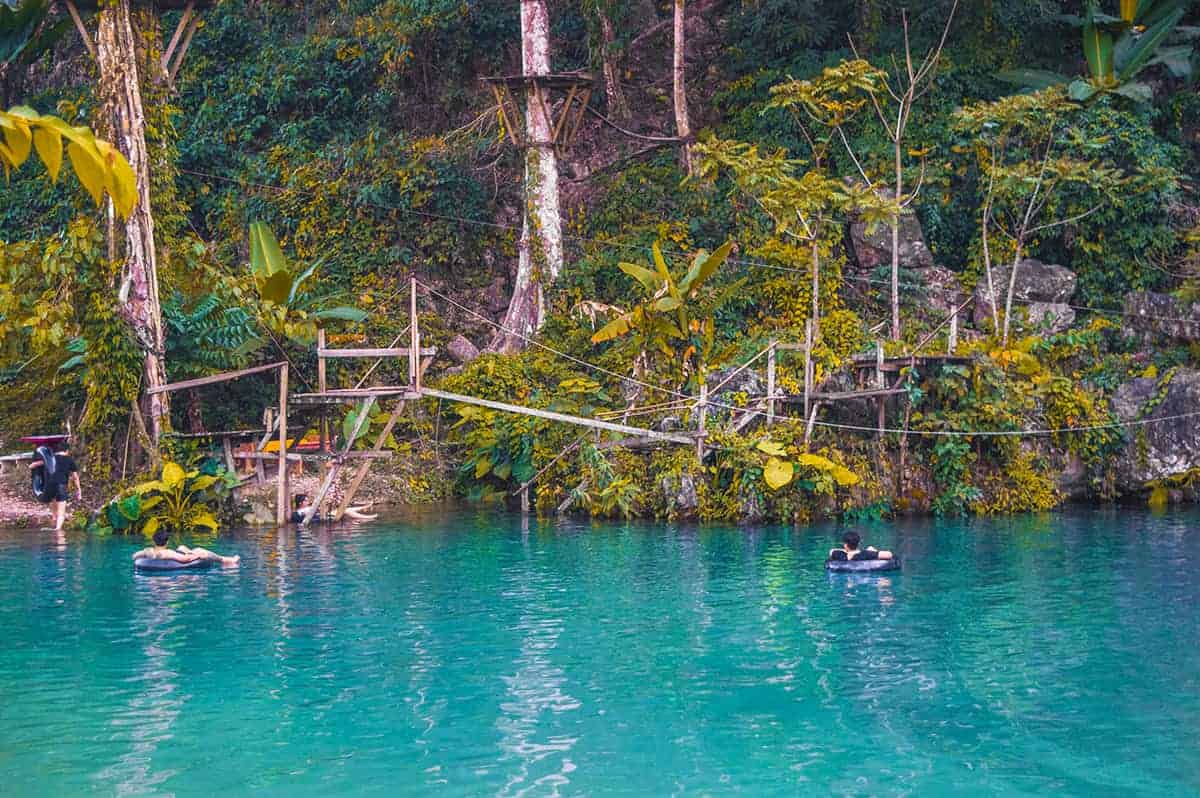
Tham Chang Cave
Tucked into a hillside near the Blue Lagoons, Tham Chang Cave offers a peaceful escape into nature’s underground wonders. Reached via a moderately challenging forest trail, the journey rewards you with a serene cavern adorned with a radiant Buddha statue, shimmering flowstone walls, towering stalactites, and crystal-clear pools fed by gentle streams.
For the most magical experience, arrive early—before the tour groups descend—and soak in the cave’s quiet beauty in near solitude.

Tham Nam Water Cave
Tham Nam Water Cave brings together three of Vang Vieng’s signature adventures—tubing, caving, and lagoon swimming—into one unforgettable experience. A slow-moving river winds through lush jungle before disappearing into the mountains and carving its way through pitch-black cave tunnels.
Don’t worry about getting lost—ropes guide you along the way, and the cheers of fellow adventurers echo through the darkness. The water stays around waist-deep, making it safe and fun for all levels.
Beyond the cave itself, you can easily spend a full day here enjoying river-fed swimming pools, thrilling zip lines, and local restaurants scattered around the site.
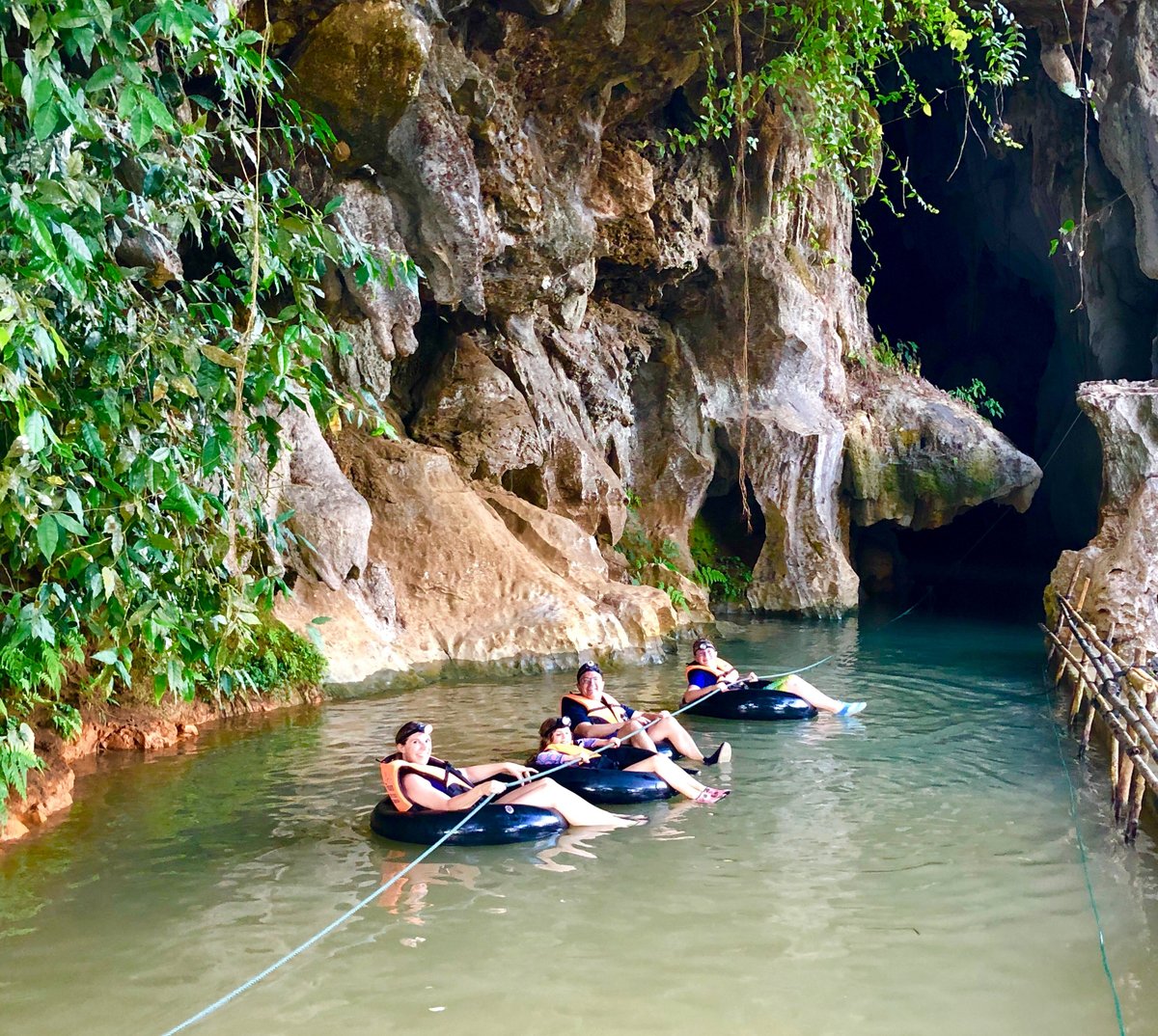
Wat That Temple
Much like in neighboring Thailand, temples hold deep spiritual significance in Laos, a predominantly Theravada Buddhist country. In Vang Vieng, it’s common to see monks stepping out of prayer halls to collect alms or locals quietly praying at the feet of Buddha statues.
While Vang Vieng’s temples—built in the 20th century—may not rival the grandeur of those in Luang Prabang, they still offer a serene and meaningful glimpse into local Buddhist life. Chief among them is Wat That, the town’s largest and most prominent temple, located right in the heart of Vang Vieng.
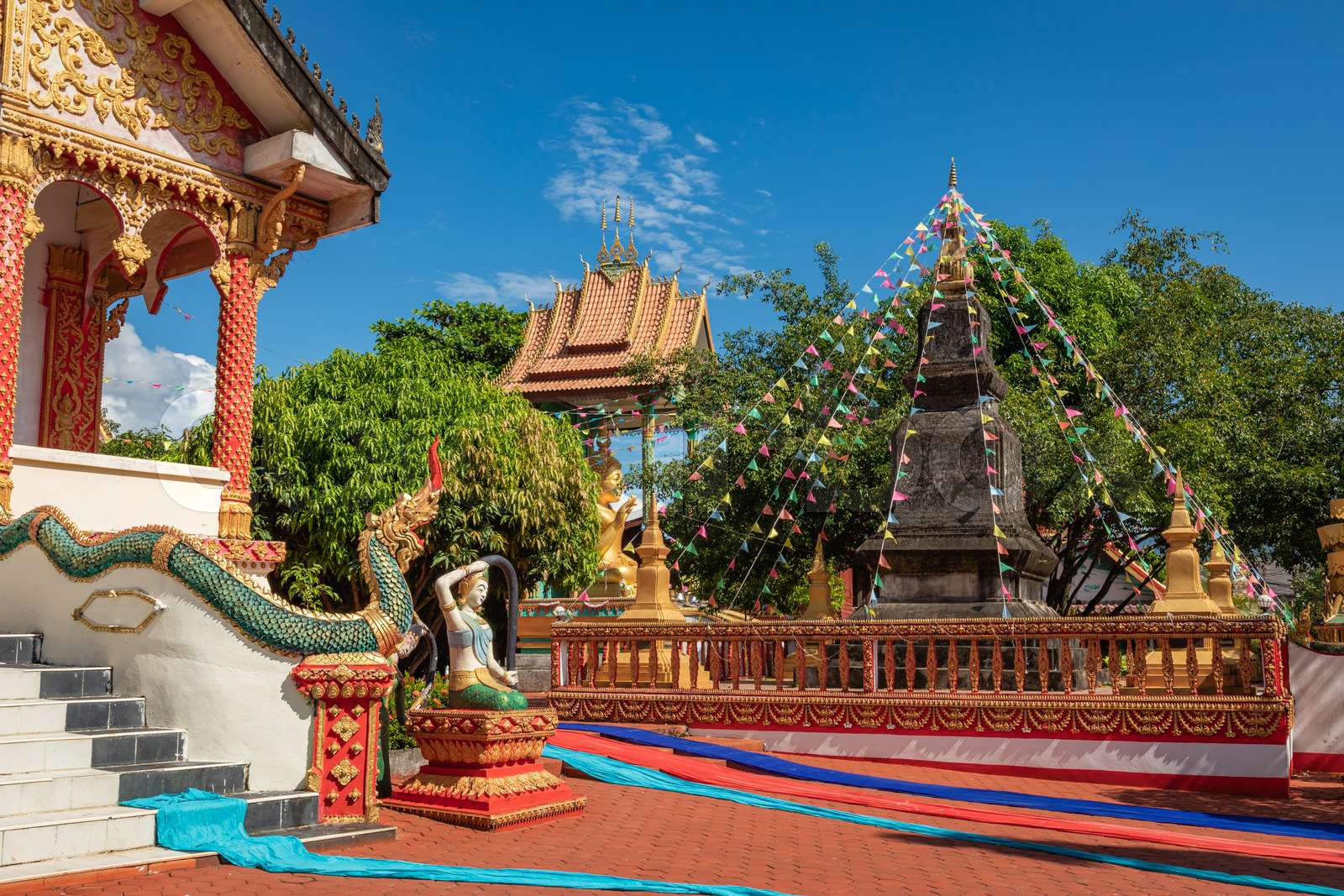
Nam Xay Viewpoint
Ask around in Vang Vieng for the best viewpoint, and you’ll hear a few different opinions—but Nam Xay Viewpoint is always a favorite. Easier and shorter than the popular Phangern trek, the hike to Nam Xay takes just 20–25 minutes and rewards you with stunning 360-degree views of Vang Vieng’s karst mountains and lush rice fields.
The trail starts off paved but quickly turns rugged. Toward the top, you’ll find yourself scrambling over rocks and loose stones—sometimes on all fours. The path can get muddy and slippery, so wear sturdy shoes and tread carefully. The effort is well worth it.
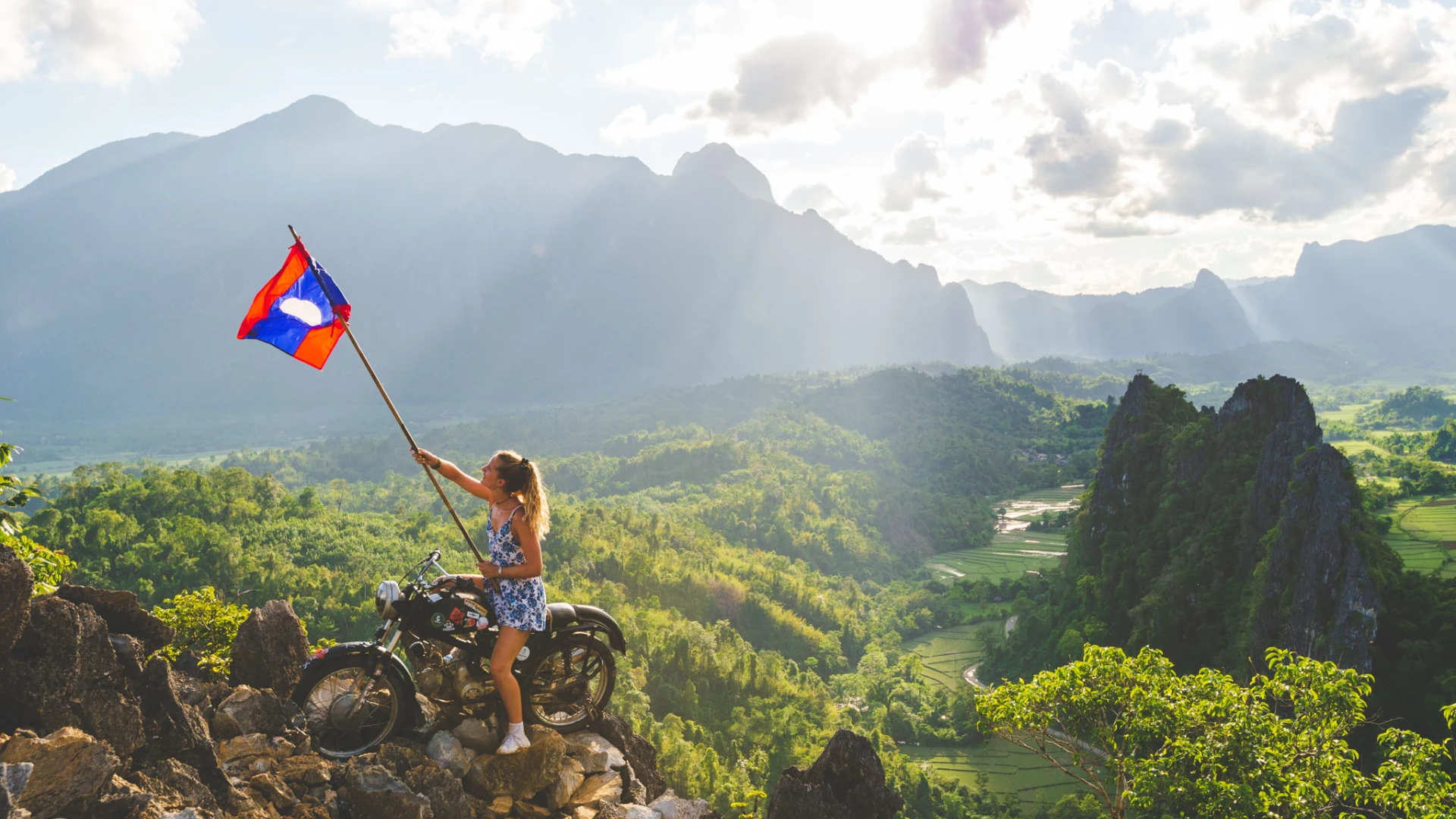
Kaeng Nyui Waterfall
Kaeng Nyui Waterfall may slow to a gentle trickle during the dry season, but after a good rain, it transforms into a roaring cascade, tumbling down lush, green slopes into a mountain-fed stream. Reaching the falls involves a short trek through the jungle, including a crossing over a rickety rope bridge—and the path can become slippery and treacherous in wet weather.
Good footwear is essential. The trailhead is just 10 kilometers (about 6 miles) from Vang Vieng, making it an easy half-day adventure. For the most peaceful experience, arrive early before the crowds roll in.
